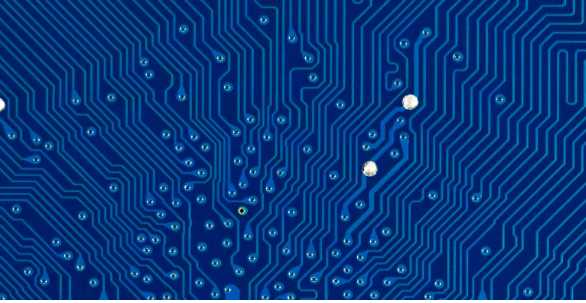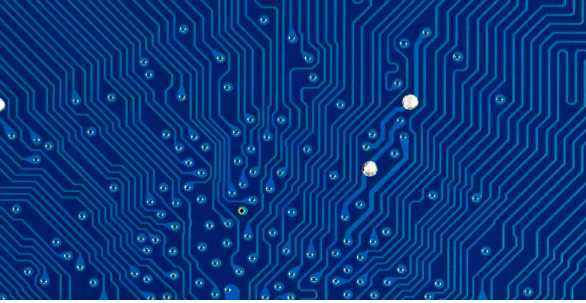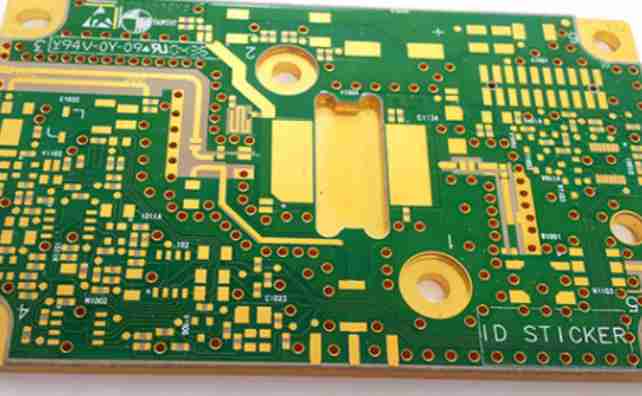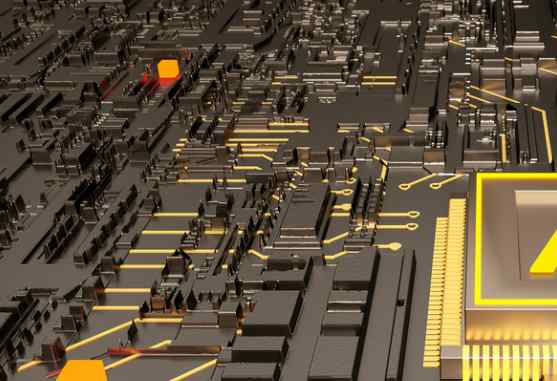
PCB circuit boards are providers of electrical connections for electronic components. It has a history of more than 100 years; Its design is mainly layout design; The main advantage of using circuit boards is to greatly reduce wiring and assembly errors, improve the level of automation and production labor rate.
How to prevent the interference of PCB circuit board? The following Xiaobian will explain to you:
1, choose a reasonable wire width Because the interference on the PCB printed circuit board is mainly caused by the influence of the printed conductor inductor, the transient current of the line, therefore, should be minimized to reduce the inductance of the printed wire.
2, in order to suppress the crosstalk between the conductors of the PCB circuit board, in the design of wiring should try to avoid long distance equal wiring, the possible distance between the lines, the signal line and the ground and the power line as far as possible do not cross, in some signal lines very sensitive to interference set up a ground printed line, crosstalk can be effectively suppressed.
3, with the correct routing strategy, you can reduce the use of equal traces of lead inductance, however, the distribution of capacitors between conductors and inductance increase, if the layout allows, it is best to use a well pattern mesh wiring structure, the specific practice is in the printed circuit board wiring side of the vertical wiring on the other side, and then in the cross hole with metallized holes connected.
PCB circuit boards are widely used in various fields, and almost all electronic devices contain corresponding PCB boards. In order to ensure the normal operation of electronic equipment, reduce the electromagnetic interference between each other, and reduce the adverse impact of electromagnetic pollution on human and ecological environment, electromagnetic compatibility design can not be ignored.

Discussion on several important technical properties of PCB printing ink
PCB ink quality is excellent, in principle can not be separated from the combination of the above components. The excellent quality of the ink is the comprehensive embodiment of the scientific, advanced and environmental protection of the formula. It is reflected in:
viscosity
It is short for dynamicviscosity. viscosity, which is the shear stress of the fluid flow divided by the velocity gradient in the direction of the flow layer, is expressed in international units of Pa/s (Pa). S) or millipa/second (mPa. S). In PCB production, it refers to the fluidity of the ink driven by external forces.
Conversion relationship of viscosity units:
1Pa. S=10P=1000mPa. S=1000CP=10dpa.s
plasticity
It means that after the ink is deformed by external force, it still maintains its properties before deformation. The plasticity of ink is conducive to improving the printing accuracy;
thixotropic
The ink is gelatinous when it is standing, and the viscosity changes when it is touched, also known as shaking and anti-flow hanging;
mobility
(leveling) The degree to which the ink is spread around under the action of external forces. Fluidity is the reciprocal of viscosity, and fluidity is related to the plasticity and thixotropy of the ink. Plasticity and thixotropy is large, the fluidity is large; If the fluidity is large, the imprint is easy to expand. Small fluidity, easy to appear net, resulting in ink phenomenon, also known as mesh;
viscoelasticity
Refers to the ability of the ink to bounce back quickly after the ink is cut and broken. It is required that the ink deformation speed is fast and the ink rebound is rapid in order to be conducive to printing.
aridity
The ink is required to dry as slowly as possible on the screen, and the ink is expected to be transferred to the substrate, the faster the better;
fineness
The size of the pigment and solid material particles, PCB ink is generally less than 10μm, the size of the fineness should be less than one-third of the mesh opening;
Wire-drawing property
When the ink shovel is used to pick up the ink, the degree to which the silk ink is stretched without breaking is called wire drawing. Long ink filament, there are many filaments on the ink surface and printing surface, so that the substrate and plate are stained, and even cannot be printed;
Transparency and hiding power of ink
For PCB inks, according to different uses and requirements, various requirements are also put forward for the transparency and hiding power of the ink. In general, line inks, conductive inks and character inks require high hiding power. The solder resistance is more flexible.
Chemical resistance of ink
PCB ink according to the purpose of use, the corresponding requirements for acid, alkali, salt and solvent requirements have strict standards;
Physical properties of ink
PCB ink must meet external scratch resistance, heat shock resistance, resistance to mechanical stripping, and meet a variety of strict electrical performance requirements;
The use of ink safety and environmental protection
PCB inks require low toxicity, odorless, safe and environmentally friendly.
Above we have summarized the basic performance of twelve PCB inks, and in the actual operation of screen printing, the viscosity problem is closely related to the operator. The level of viscosity is of great concern to the smoothness or not of screen printing. Therefore, in the PCB ink technical documents and QC reports, the viscosity is clearly marked, indicating under what conditions, what type of viscosity testing equipment is used. In the actual printing process, if the viscosity of the ink is high, it will cause difficulty in printing, and the edge of the graph is seriously jagged. In order to improve the printing effect, diluents will be added to make the viscosity meet the requirements. However, it is not difficult to find that in many cases, in order to obtain the ideal resolution (image resolution), no matter what viscosity you use, it is always impossible to achieve. Why is that? After in-depth research, it was found that ink viscosity is an important factor, but it is not the only one. There is another rather important factor - thixotropy. It is also affecting the printing accuracy.







